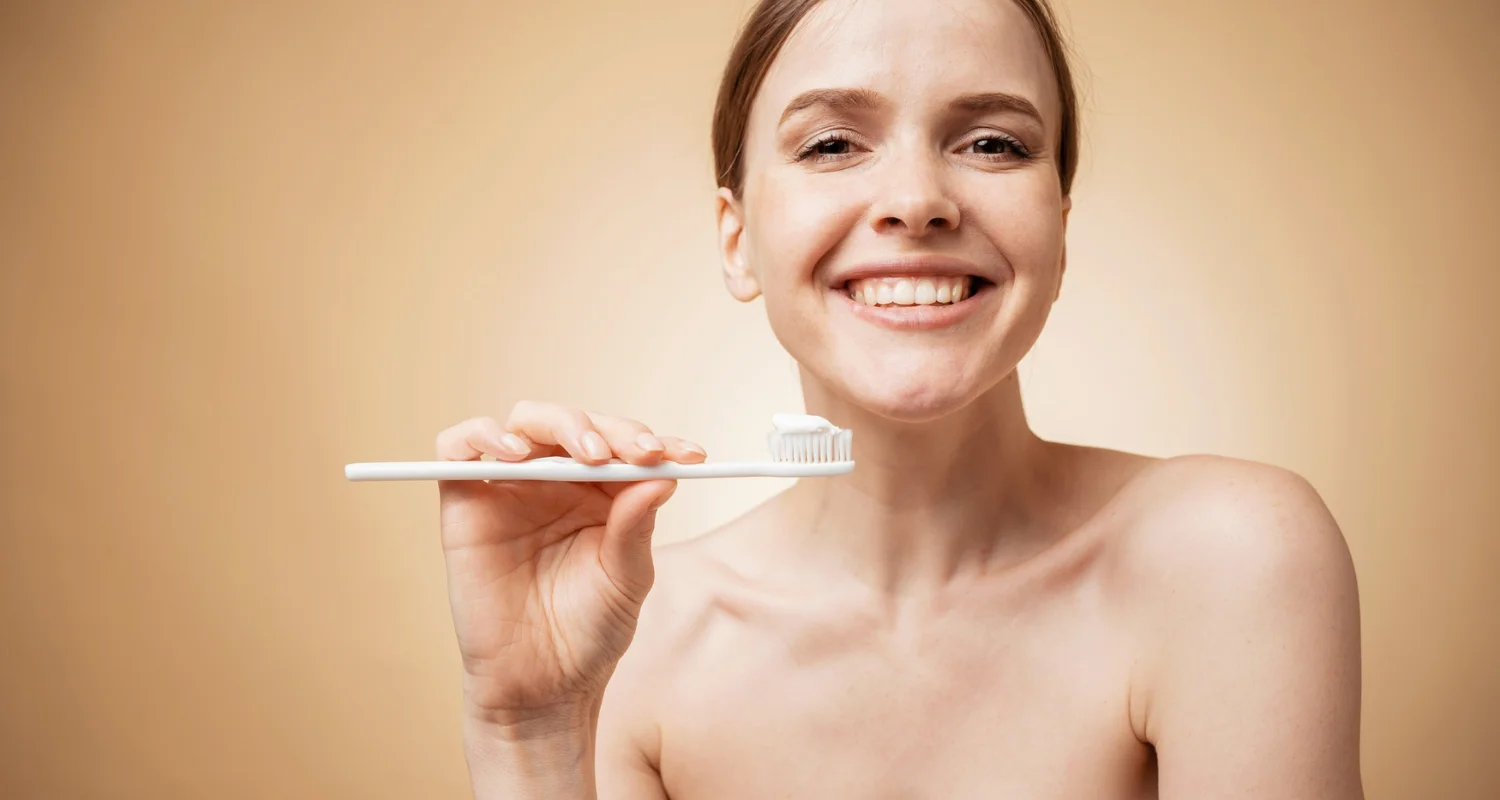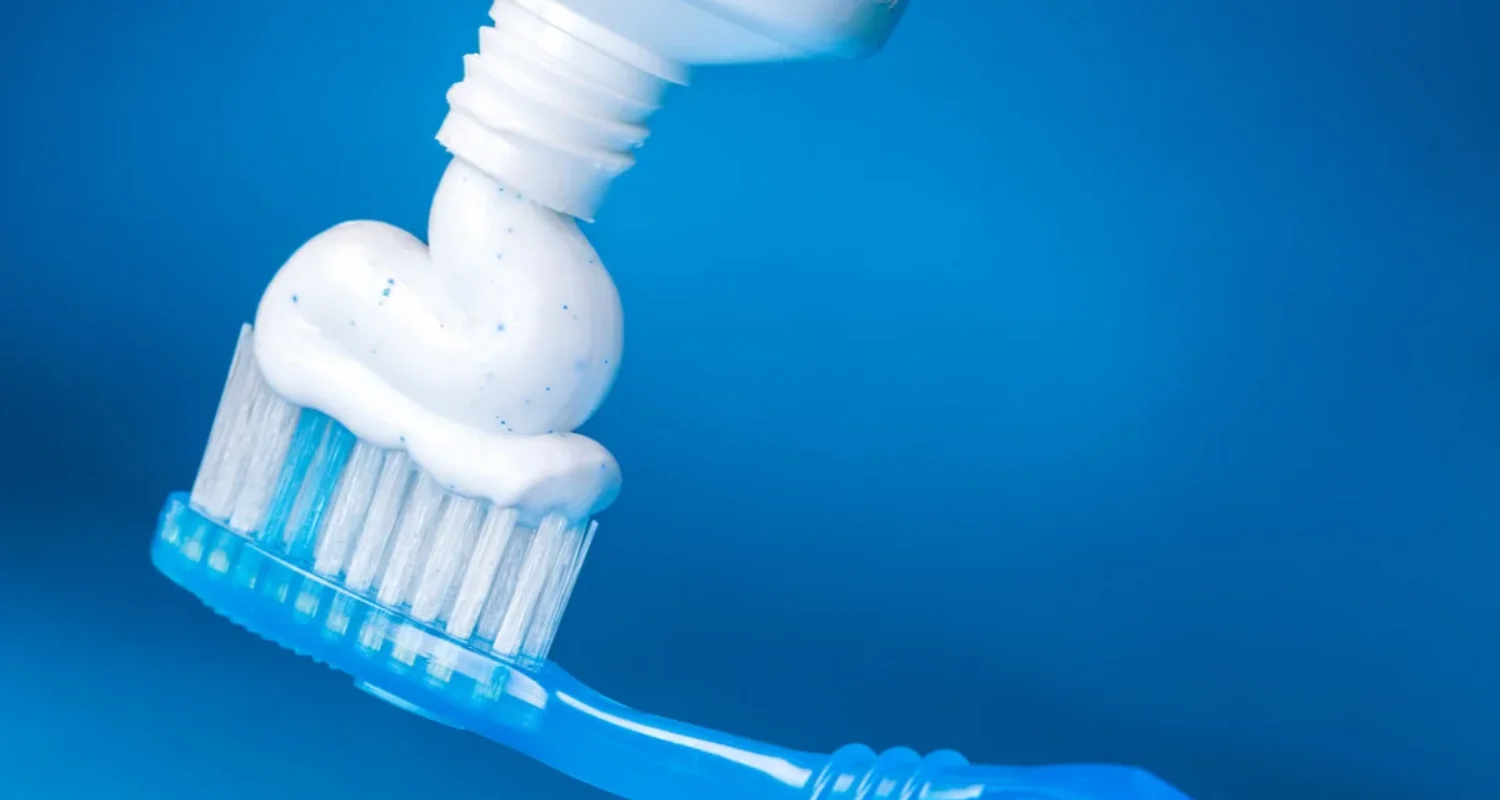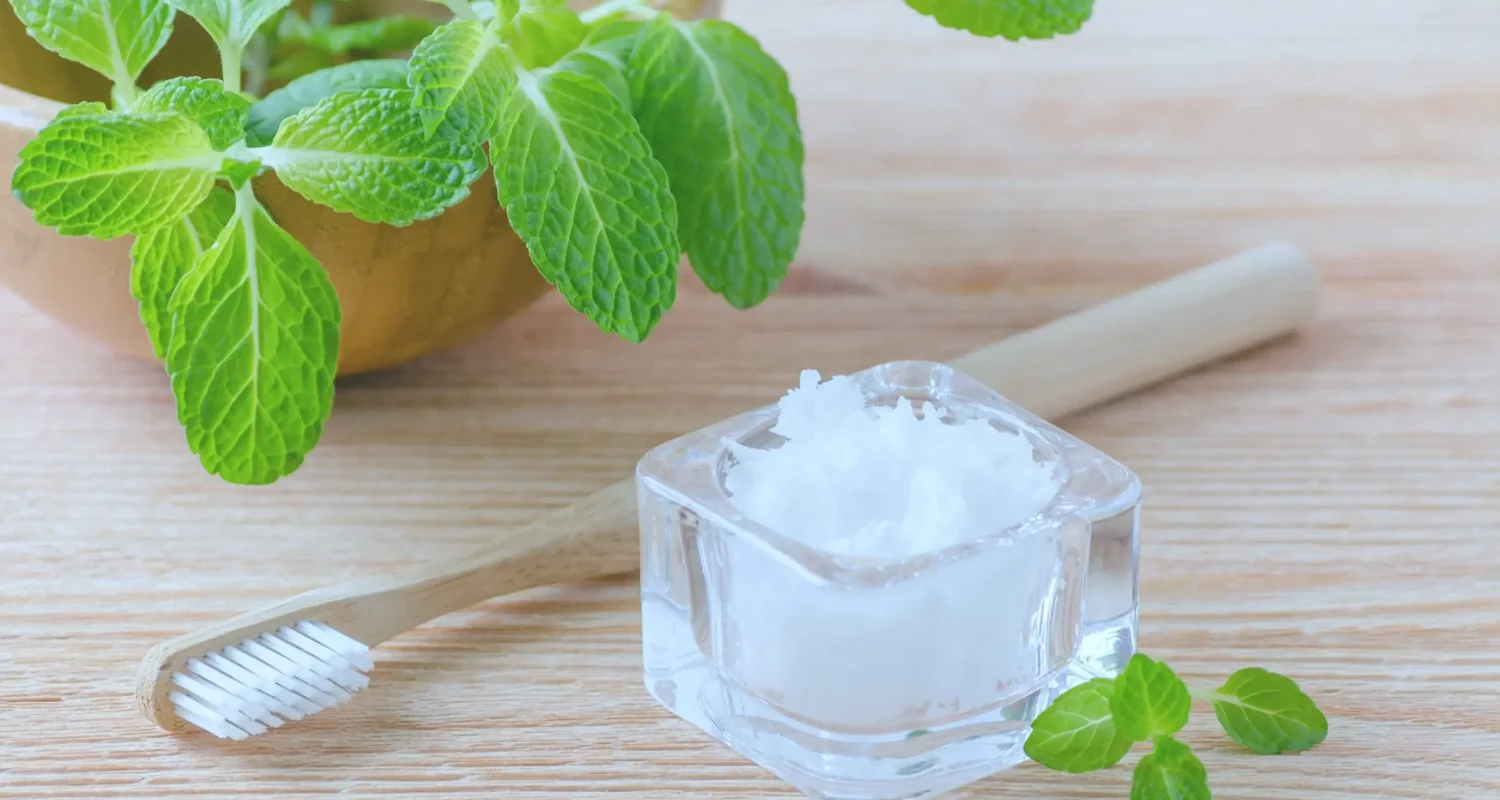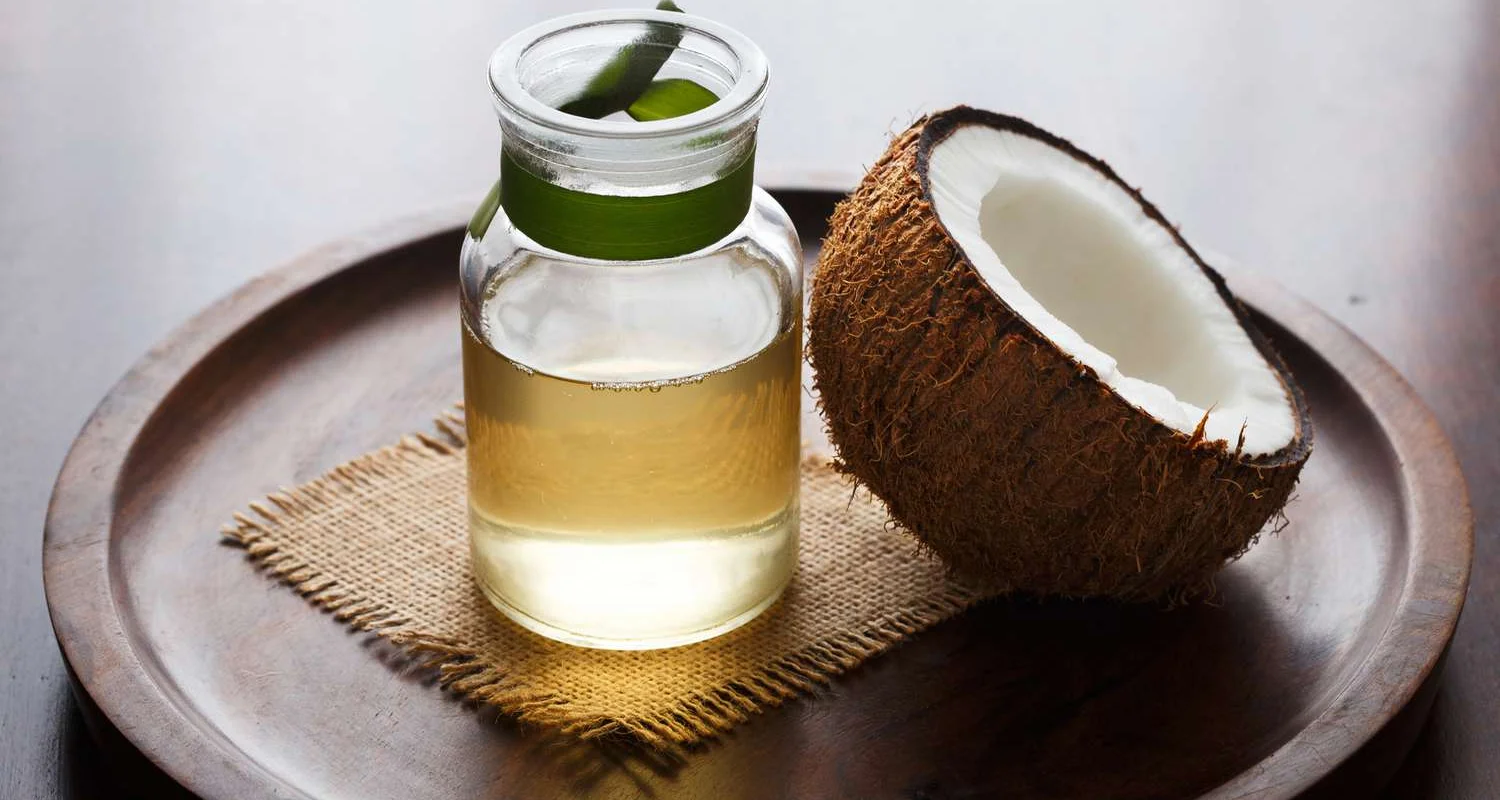Last Updated on: 13th December 2025, 07:05 am
Fluoride is a mineral naturally present in the Earth’s crust, water, and food. It is often included in toothpaste due to its dental benefits. However, some individuals choose fluoride-free toothpaste to reduce the risk of dental fluorosis in children, avoid potential toxicity in those with certain health conditions and as a preference for more natural products to prevent long-term fluoride accumulation.
Toothpaste is a common product in daily hygiene routines, but not everyone is aware of the potential health implications. Just as people are increasingly attentive to the ingredients in their food, it’s important to consider what’s in toothpaste. Even if we don’t intentionally swallow it, toothpaste can still be absorbed through our tongue and gums during brushing.
But, before we start, you can check some of the best fluoride-free toothpaste by clicking here.
Fluoride-free toothpaste
When choosing a toothpaste without fluoride, the most important recommendation is that it has the ADA seal of acceptance. This tells us that it complies with measures that make it safe and effective and helps us maintain optimal oral health.
ADA-approved toothpastes must not include flavors that can cause cavities, such as sugar, and may contain active ingredients to help whiten teeth, reduce tooth sensitivity, prevent enamel erosion, and reduce gingivitis and tartar buildup.
Why use Toothpaste without Fluoride?
It is important to remember that fluoride has proven benefits for cavity prevention and overall dental health. The use of toothpaste without fluoride should be under the supervision of a dentist as it will allow you to keep adequate control of the effectiveness of the product while avoiding long-term problems.
Some individuals may opt for fluoride-free toothpaste for the following reasons:
● Prevention of dental fluorosis: Fluoride-free toothpaste can reduce the risk of dental fluorosis, a condition caused by excessive fluoride intake during tooth development, leading to white spots and discoloration on the enamel.
● Avoidance of fluoride toxicity: Ingesting large amounts of fluoride can be toxic, particularly for individuals with conditions that limit the elimination of fluoride from the body. Fluoride-free toothpaste helps mitigate this risk.
● Medical conditions: For individuals with specific health issues that restrict fluoride elimination, using fluoride-free toothpaste can reduce the risk of toxic buildup in the body.
● Preference for natural products: Many consumers prefer to use products with natural ingredients, avoiding synthetic chemicals like fluoride in their personal care routines. Check some of the best options clicking here.
● Concerns over long-term fluoride exposure: Some people choose to avoid fluoride due to concerns about the potential long-term effects, even though the scientific community generally supports its use for dental health.
Choosing fluoride-free toothpaste under the guidance of a dentist ensures that it effectively supports dental health while addressing these specific concerns. However, you can check some of the options here.
Base ingredients of fluoride-free toothpaste
Fluoride-free toothpaste often incorporates a variety of natural ingredients that provide effective alternatives to fluoride while promoting overall oral health. These ingredients are carefully selected for their specific benefits, such as anti-inflammatory, antibacterial, and remineralizing properties, making them suitable for those who prefer natural products or need to avoid fluoride due to health concerns.
Here are some of the common base ingredients found in fluoride-free toothpaste:
● Baking soda (sodium bicarbonate): Baking soda is widely used in fluoride-free toothpaste due to its mild abrasive qualities, which help to clean teeth and remove surface stains without damaging the enamel. It also has the ability to neutralize acids in the mouth, thereby reducing the risk of cavities. The low concentration of baking soda in toothpaste ensures that it effectively cleans the teeth while being gentle on the enamel.
● Xylitol: Xylitol is a natural sweetener that is particularly beneficial for oral health. It does not increase blood sugar levels, making it ideal for diabetic individuals. More importantly, xylitol inhibits the growth of bacteria that cause cavities and increases saliva production, which helps in the remineralization of enamel. By enhancing saliva flow, xylitol aids in washing away food particles and neutralizing acids that can erode tooth enamel.
● Coconut oil: Known for its antimicrobial properties, coconut oil is an excellent ingredient for reducing harmful bacteria in the mouth. It also promotes gum health and is commonly used in oil pulling, a traditional practice where oil is swished in the mouth to remove toxins and improve oral hygiene. Coconut oil’s natural properties make it an effective component in maintaining a healthy oral environment. Do you want to know more about it? Click here!
● Myrrh: Myrrh has been used for centuries for its powerful antibacterial and anti-inflammatory effects. In the context of oral health, myrrh helps reduce gum inflammation, combat bacterial infections, and aid in the healing of oral tissues. Its inclusion in toothpaste helps prevent periodontal diseases and supports overall gum health.
● Neem extract: Neem is another traditional ingredient known for its antifungal and antibacterial properties. The extract helps reduce and eliminate oral infections, improve periodontal health, and prevent plaque formation. Its natural properties make it a key ingredient in fluoride-free toothpaste for those looking to maintain their oral health without synthetic chemicals.
● Aloe vera: Aloe vera is celebrated for its soothing and healing properties. In toothpaste, it helps reduce inflammation of the gums and supports the regeneration of oral tissues. Aloe vera’s anti-inflammatory effects make it particularly beneficial for individuals with sensitive gums or those prone to gum irritation.
● Calcium carbonate: Used as a mild abrasive, calcium carbonate is an effective ingredient for cleaning teeth and providing a source of calcium, which is essential for strengthening enamel. Its inclusion in fluoride-free toothpaste helps to maintain strong and healthy teeth by aiding in the remineralization process.
● Essential oils (peppermint, tea tree, clove): Essential oils are commonly used in fluoride-free toothpaste not only for their flavor but also for their therapeutic properties. Oils like peppermint, tea tree, and clove have antibacterial and anti-inflammatory effects that help maintain oral hygiene and freshen breath. These oils contribute to the overall effectiveness of fluoride-free toothpaste by promoting a healthy oral environment. Do you want to know some offers of essential oils? Here are some options.
These natural ingredients work synergistically to provide an effective, chemical-free alternative for maintaining oral health without the use of fluoride. Whether for those with specific health concerns, a preference for natural products, or simply the desire to avoid fluoride, these ingredients ensure that fluoride-free toothpaste can support a healthy smile.
Frequently Asked Questions
What do dentists say about fluoride-free toothpaste?
While fluoride-free toothpaste is generally safe, it’s recommended to use it under the supervision of a dentist. This ensures that your oral health needs are being met effectively and helps avoid potential long-term issues related to the absence of fluoride.
Why should I consider using fluoride-free toothpaste?
Fluoride-free toothpaste may be a good choice for those looking to avoid the potential risks associated with fluoride, such as dental fluorosis in children, toxicity in individuals with certain health conditions, and concerns about long-term fluoride exposure. Additionally, many people prefer natural products that do not contain synthetic chemicals.
Is fluoride-free toothpaste effective in maintaining oral health?
Yes, fluoride-free toothpaste can be effective in maintaining oral health when it contains natural ingredients with antibacterial, anti-inflammatory, and remineralizing properties. Ingredients like baking soda, xylitol, and coconut oil are commonly used to clean teeth, reduce bacteria, and promote gum health.
What are the key ingredients in fluoride-free toothpaste?
Common ingredients in fluoride-free toothpaste include baking soda, which acts as a mild abrasive; xylitol, a natural sweetener that inhibits bacterial growth; coconut oil for its antimicrobial properties; myrrh and neem extract for their antibacterial effects; and essential oils like peppermint and tea tree for added oral hygiene benefits.
How can I ensure the fluoride-free toothpaste I choose is effective?
To ensure effectiveness, look for fluoride-free toothpaste that carries the ADA (American Dental Association) Seal of Acceptance. This seal indicates that the product meets safety and efficacy standards and contains ingredients that help whiten teeth, reduce sensitivity, prevent enamel erosion, and combat gingivitis and tartar buildup.
Share
References:
1. Cebrián, J. (2023, 17 noviembre). Mirra: para qué sirve y cómo se utiliza. Cuerpomente. https://www.cuerpomente.com/guia-plantas/mirra#:~:text=Mirra%20para%20el%20cuidado%20de,dolor%20dental%20y%20la%20inflamaci%C3%B3n
2. Charbonneau, A. (2021, 4 julio). Fluoride free homemade remineralizing toothpaste. Natural Tasty Chef. https://naturaltastychef.com/fluoride-free-homemade-remineralizing-toothpaste/
3. Litovsky, N. (2016, 7 junio). Homemade Fluoride-Free Toothpaste – Save the Children, Save the World. Save The Children, Save The World. https://savechildrensaveworld.com/homemade-fluoride-free-bentonite-toothpaste/
4. McDowell. (2023, 14 septiembre). Why Avoid Fluoride In Toothpaste? (Pros & Cons). Wayzata Dental. https://wayzatadental.com/why-avoid-fluoride-in-toothpaste/
5. Muiños, L., & Deczynski, R. (2024, 1 agosto). The 10 Best Natural Toothpastes for a Healthy Smile. Health. https://www.health.com/condition/oral-health/best-natural-toothpaste
6. News-Medical. (2022, 16 noviembre). (How to) Make Your Own Toothpaste. https://www.news-medical.net/health/(How-to)-Make-Your-Own-Toothpaste.aspx
7. ORGANIC TOOTHPASTES. (s. f.). Lucky Teeth. https://lucky-teeth.com/collections/toothpastes?srsltid=AfmBOopV64ItPazIJ5V6cVyVqEregPrBHwwHyJpdWbtntnqPqnJoaIkL
8. Pratt, E. (2019, 3 enero). Why You Shouldn’t Buy Fluoride-free Toothpaste. Healthline. https://www.healthline.com/health-news/you-shouldnt-buy-fluoride-free-toothpaste#What-is-fluoride?
9. Surina, E. (2023, 8 marzo). Why is there fluoride-free toothpaste? HowStuffWorks. https://health.howstuffworks.com/wellness/oral-care/products/fluoride-free-toothpaste.htm
-
Nayibe Cubillos M. [Author]
Pharmaceutical Chemestry |Pharmaceutical Process Management | Pharmaceutical Care | Pharmaceutical Services Audit | Pharmaceutical Services Process Consulting | Content Project Manager | SEO Knowledge | Content Writer | Leadership | Scrum Master
View all posts
A healthcare writer with a solid background in pharmaceutical chemistry and a thorough understanding of Colombian regulatory processes and comprehensive sector management, she has significant experience coordinating and leading multidisciplina...


















